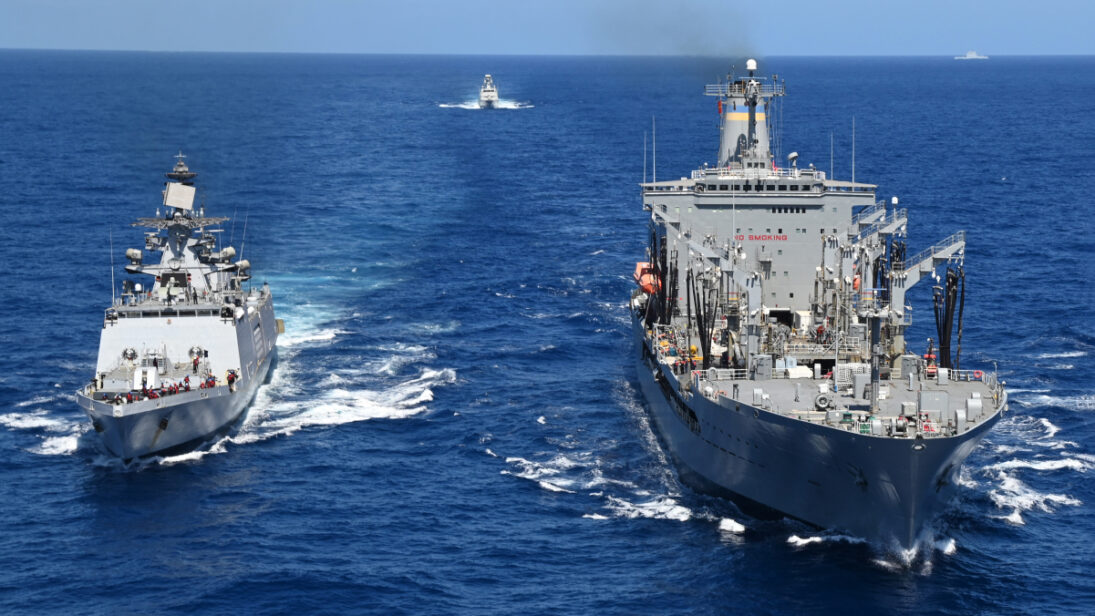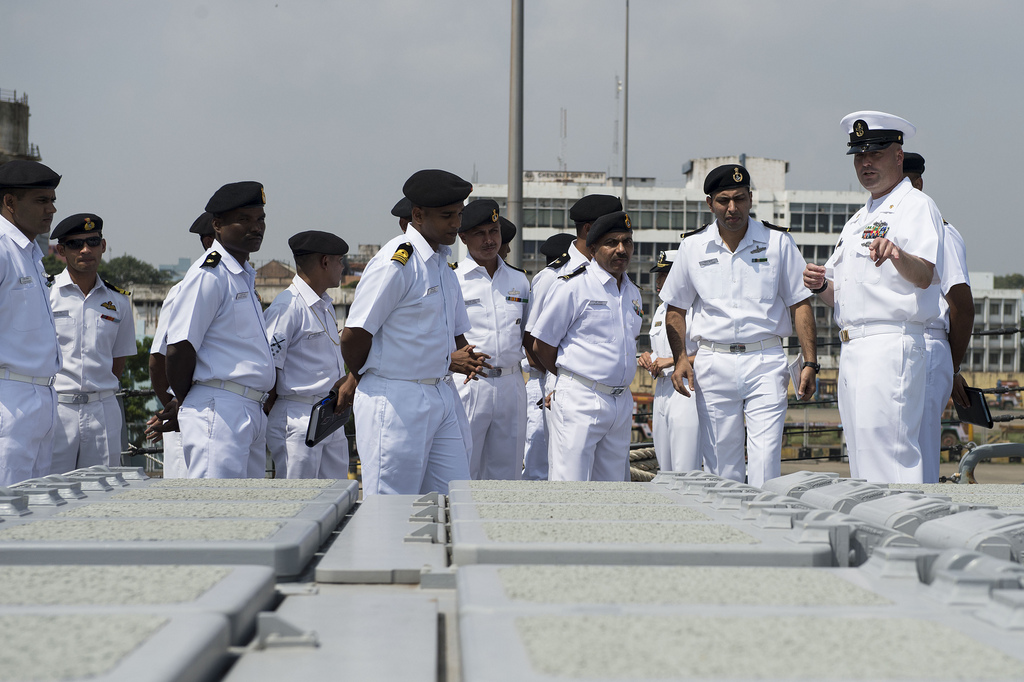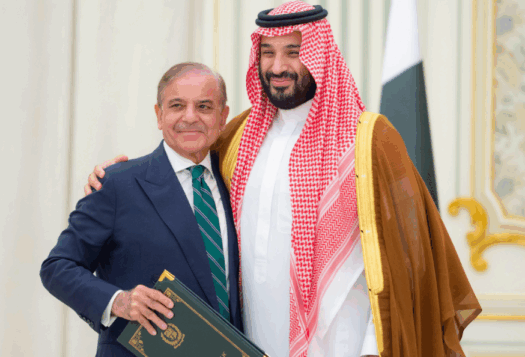
Throughout different eras of strategic competition, maritime trade routes have remained vital areas of contestation. The Indian Ocean connects Africa and Asia with a vast expanse of Pacific waterways and ports, at present hosting around 100,000 commercial vessels per annum, along with one-third of bulk cargo ships. The significant amount of oil flow from the Persian Gulf further augments the Indian Ocean region’s strategic importance. According to the reports, two-thirds of the world’s total oil shipments are carried out through the Indian Ocean. In total, the value of trade volume carried through the Indian Ocean soars up to nearly one trillion dollars per annum.
India is among the largest littoral states in the Indian Ocean region (IOR). With intensifying Indo-China competition in the IOR, India’s defense focus has increasingly turned towards the Indian Ocean. While India’s first naval strategy for the region was released in 2004, subsequent documents demonstrate a shift in India’s approach to the IOR. To become a regional strongman and to counter China, India has made significant transformations in its maritime strategic setting.
India’s Evolving Naval Approach to the IOR (2004 – 2015)
India’s evolution as a maritime power can be broken into three stages. The first period spans from 2004 to 2007 and is described by India’s first maritime military strategy released in 2004. During this stage, India adopted a free rider model as detailed by Holmes and Yoshihara’s model analyzing naval power. According to the model, states with limited national interests require low-level naval power to successfully utilize the sea and curb the low-level threats emanating from the sea.
India’s strategic role in the IOR has increased with the changing regional security dynamics as India’s primary interest has shifted from using seas to securing seas.
In 2004, the Indian navy published its first maritime doctrine “Freedom of use of seas-Indian maritime military strategy,” later updated in 2007. This doctrine emphasized the role of the Indian navy in allowing India to “use” Indian Ocean waters for its national interest. In the early years of the twenty-first century, India recognized the IOR as a key node for global maritime trade, but not as the hotly contested geopolitical landscape it is today. In that time period, India still understood itself as an emerging power with a limited naval force, confined to coastal waters. However, Indian strategists were acutely aware of the changing dynamics in the IOR, specifically China’s growing military capabilities and increasing tensions with the United States.
The second model described by Holmes and Yoshihara is the constable, which describes the second stage in the evolution of India’s maritime doctrine. States seeking military capabilities with the bounded goal to not allow the entanglement of foreign powers into their waters fall in this category. India moved into “the constable model” after introducing another transformation in 2009 with a new high level strategic document. The Navy’s new doctrine was called “Ensuring Secure Seas: Indian maritime security strategy” replacing “doctrine” with “strategy” and committing to “secure” waters in the Indian Ocean, rather than simply “using” them. In addition to its stronger language on the use of force, the doctrine defined the Indian navy’s areas of interest. Waters adjacent to the Indian territories were termed as primary areas of interest, while other far-flung regions of Africa and Australia were termed secondary areas of interest.
The third model, the strongman, requires extensive naval power to maintain its writ on primary areas of interest by not letting other powerful states into their waters. While early Indian naval doctrines show a force limited to presence, surveillance, and constructive maritime engagement, India’s strategic role in the IOR has increased with the changing regional security dynamics as India’s primary interest has shifted from using seas to securing seas. New Delhi’s other main imperative behind an enhanced maritime presence was to ensure nuclear deterrence by gaining credible second-strike capability.
China’s continuous rise and increased interference in India’s perceived sphere of influence has pushed India to modify its previous doctrine to tackle challenges emerging from growing Chinese military prowess. India’s most recent maritime doctrine was updated in 2015, with an explicit emphasis on becoming regional “strongman” and to countering the growing Chinese presence in IOR. While its maritime doctrine has not been updated again, events since suggest further that India is cementing its approach as a maritime strongman in the IOR.
Post-2015 Developments
The 2015 Indian Maritime Doctrine is a revised and reformulated version of the 2009 doctrine. The older version of 2009 doctrine focused on developments regarding Indian status as a constable while later updated version of 2015 focuses on Indian role as a strongman in the whole IOR. The main three points of this doctrine are described below.
First, India’s Chief of Naval Staff, RK Dhowan, argued that “the shift in world view from Euro-Atlantic to an Indo-Pacific focus and the repositioning of economic and military posture towards Asia has resulted in significant economic, political, and social changes in the IOR and has tangibly impacted the Indian maritime environment.” The 2015 document was the first time India used the term “Indo-Pacific.” The transition from the Asia-Pacific to Indo-Pacific illustrates India’s enhanced centrality to regional politics. Initially, the United States and European Union states sought regional allies to protect their interests in this region, while India needs the strong allies to maintain the “constable” role. Now, India strives to adopt a more independent defense policy and to gain “strongman” status.
Second, India expanded its areas of interest from the 2009 doctrine. The adjacent areas to Indian territories, for instance, the Arabian Sea and the Bay of Bengal were termed as primary areas of interest, while the southern portion of the Indian Ocean between Australia and South Africa was called as secondary area of interest. In the revised 2015 doctrine, India enhanced both areas of interest. The important choke points on the Western and Eastern sides: Strait of Hormuz, Strait of Bab el Mandab, Strait of Malacca, Strait of Lombok, Strait of Sunda, and Strait of Ombai in South-Eastern Asia were included in primary areas of interest. The Mediterranean Sea, Atlantic Ocean, and far-flung areas of the Pacific, meanwhile, were termed secondary areas of interest.
Third, the doctrine focused on the Indian role as a net security provider, offerings security to other regional stakeholders. In this doctrine, India did not explicitly define its partners, but outlined the methods it would use to build security ties. For this purpose, India is accelerating its domestic defense industry and practicing new tactics and technologies as shown in the Malabar naval exercises, with participation from Quad members and Indonesia. India’s strong performance in these exercises shows its resilience and capabilities to assume a net security provider role in the IOR.

A Striving “Strongman” in the IOR
The continuous transformation in Indian strategic thinking is evidence of its ambitions of becoming a regional strongman. With the expansion of national interests, states require state-of-the-art, sophisticated, and extensive weaponry to protect these interests in far flung regions. Soon after the declaration of its latest maritime doctrine, India accelerated its naval modernization plan for 2030 which envisages acquisition of three aircraft carriers, modern warships, more than 200 aircrafts for naval use, nearly 06 Scorpene-class submarines, along with 05 nuclear engine powered submarines and additional P-8I surveillance aircrafts.
In pursuit of its ambitions, India has carried out several bilateral and multilateral agreements for deepening defense cooperation with the United States and littoral states. India and the United States carried out Basic Exchange and Cooperation Agreement (BECA) in 2020, Logistic Exchange Memorandum of Agreement (LEMOA) in 2016, and Communication Compatibility and Security Agreement (COMCASA) in 2018 to deepen defense cooperation in the naval domain, particularly amid China’s rise in IOR.
India has also carried out defense deals with littoral states for naval cooperation. India and Singapore agreed for use of Changi base for naval purposes in 2018. In same year, Indian Prime Minister Narendra Modi signed agreements with Indonesia and Oman for Sabang and Duqm ports respectively. As highlighted in the 2015 doctrine, India has included the southern portion of the IOR into its ambit of primary areas of interest. Therefore, to hold strong footprints in the southern parts of the IOR, India carried out deals with Australia , Seychelles, and Reunion Islands to develop naval facilities on Cocos Islands, Assumption Islands, and Reunion Territories respectively. Apart from bilateral agreements and deals, India is also extending its tentacles through multilateral forums, including the Quadrilateral Security Dialogue (QUAD), Security and Growth for All in Region (SAGAR) and Indian Ocean Naval Symposium.
In retaliation to the Chinese “string of pearl theory” India is trying to adopt “necklace of diamonds approach”
These measures are aiming to secure a strongman status. The primary factor behind the Indian race to achieve strongman status is Chinese growing naval and economic power. In retaliation to the Chinese “string of pearl theory,” India is trying to adopt a “necklace of diamonds approach”. Experts argue that India may soon modify its 2015 doctrine and may add an anti-China encircling policy.
Overall, the Indian military’s doctrinal transformations hint to India’s growing intention and capacity to project power in the IOR. The recent naval modernization which includes placing defense mechanisms comprising of Barak 1 and Barak 8 missiles shows Indian progress toward becoming a regional strongman. India has also enhanced naval installations in the Andaman and Nicobar Islands in the wake of the deployment of unmanned underwater submarines by China in IOR. In the latest doctrine, the area of primary interest are enhanced, and therefore India has refurbished and modified the Karwar naval command for a more effective presence in these areas.
Also Read: Beyond BRI Connectivity: Chinese Access to the Indian Ocean Through Afghanistan and Pakistan
***
Image 1: The Indian Navy’s INS Satpura via Flickr
Image 2: Indian Navy via Flickr


